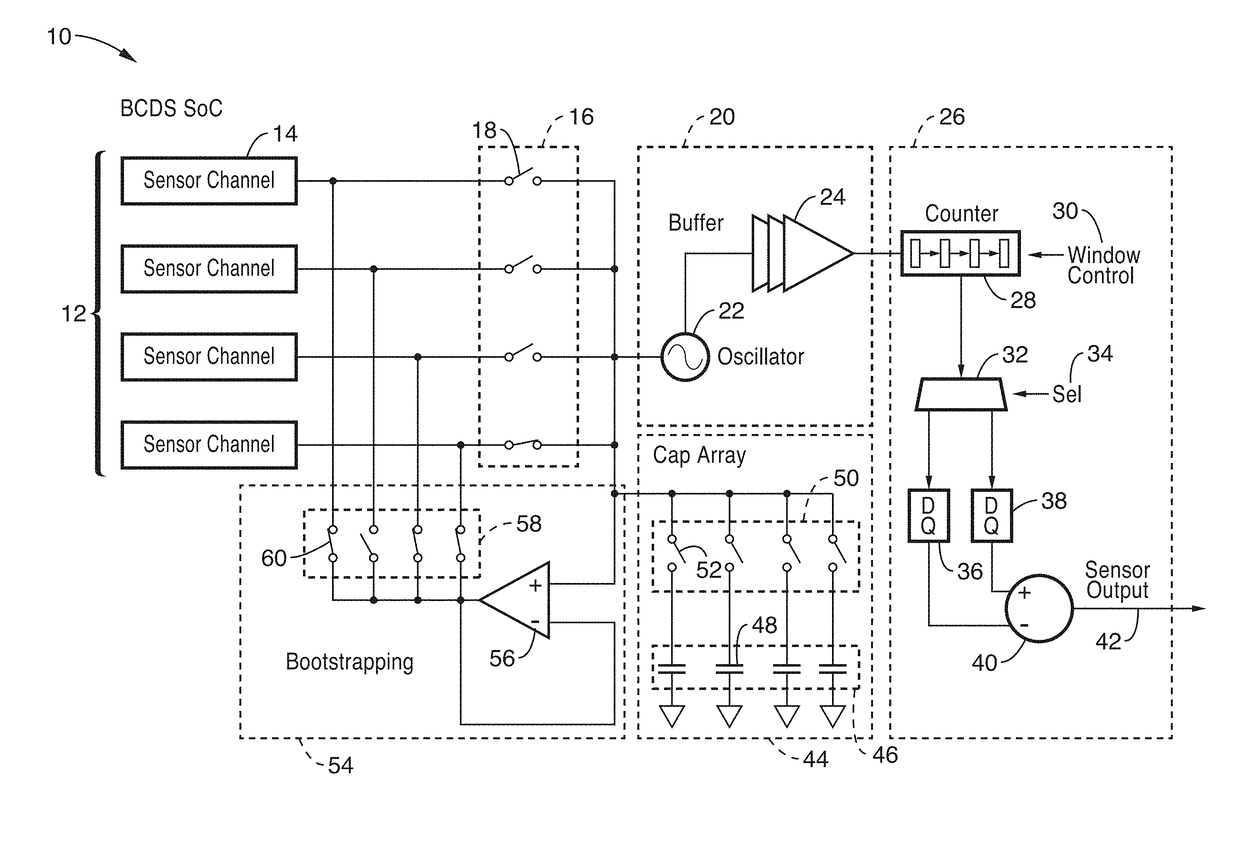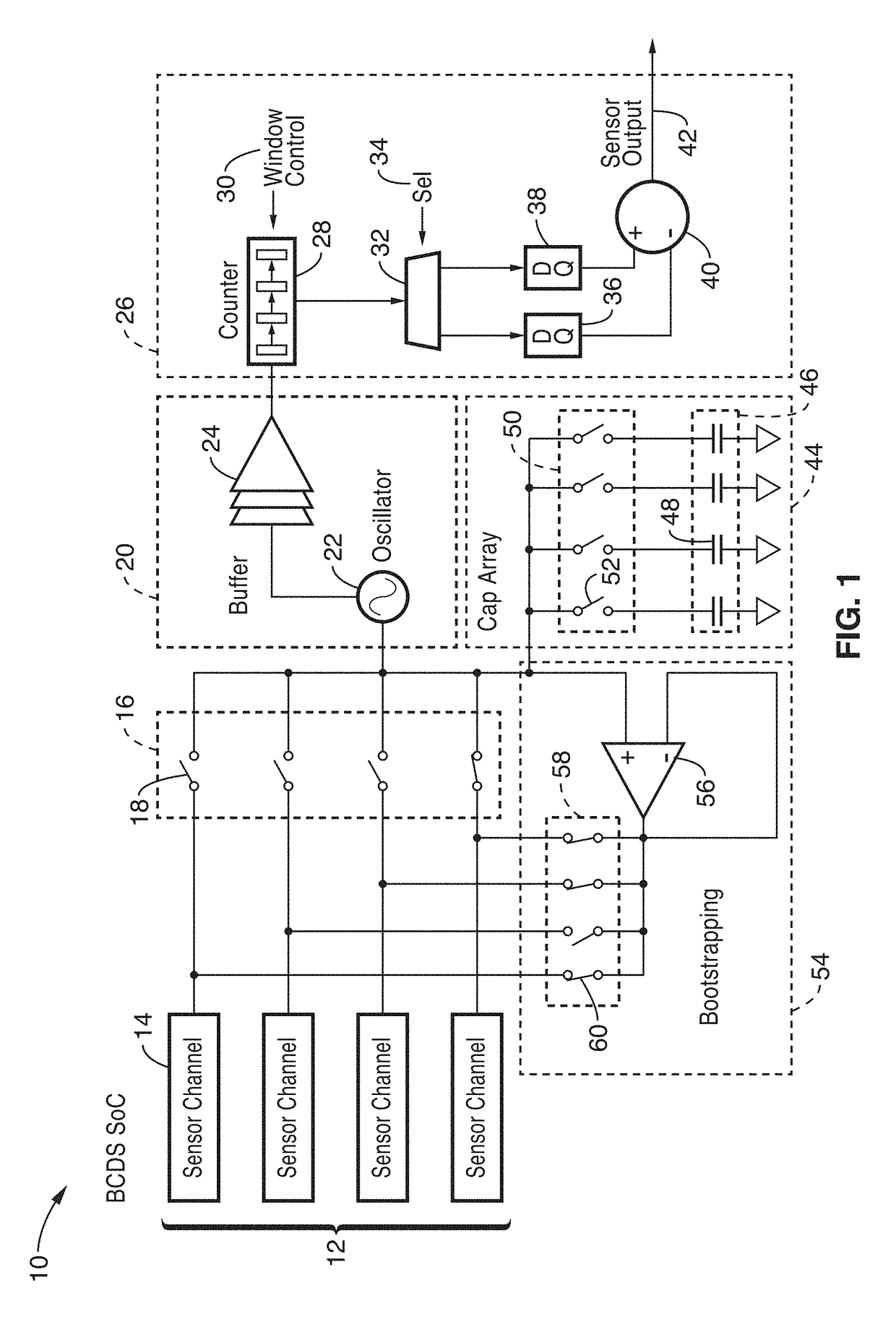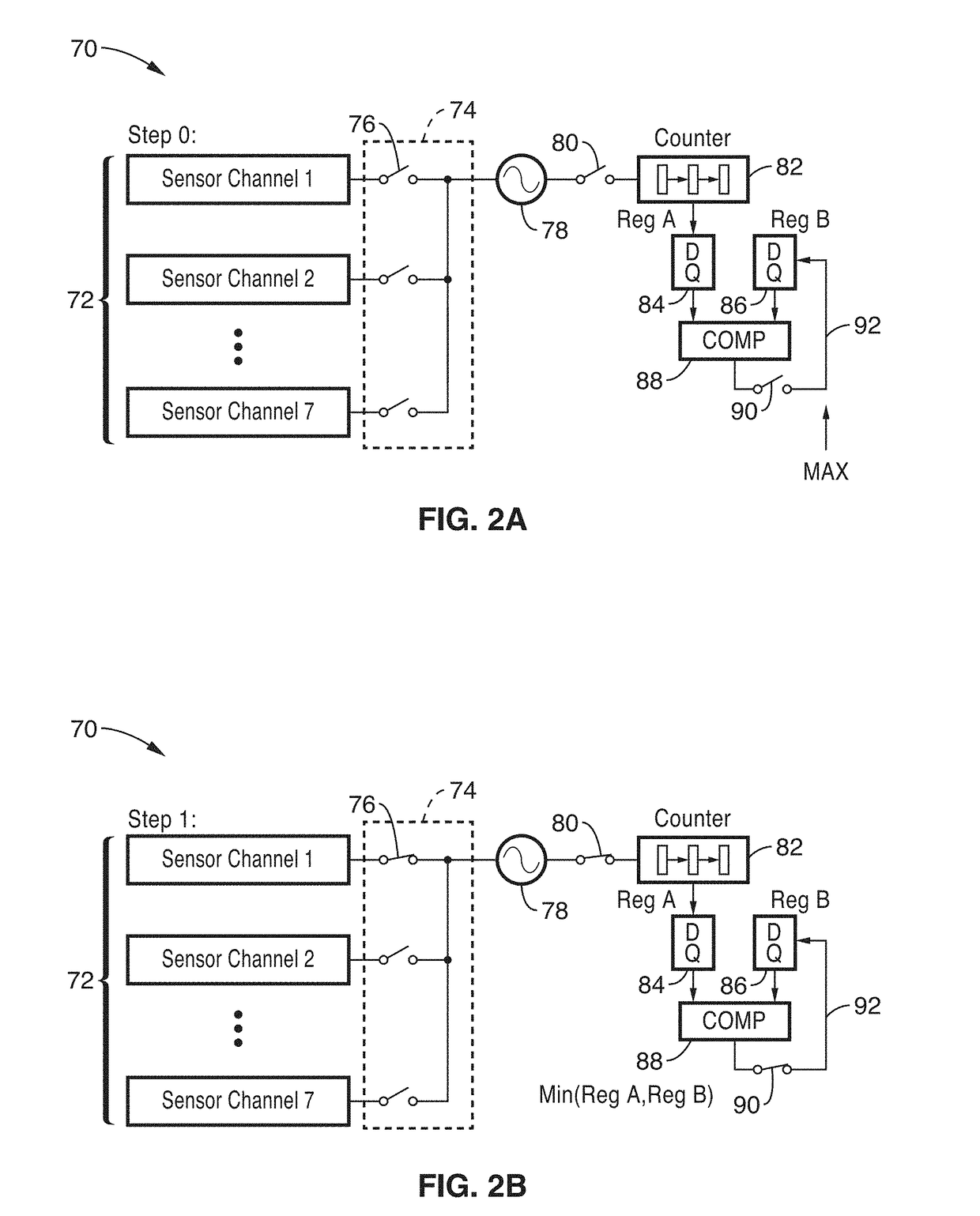Bootstrapped and correlated double sampling (BCDS) non-contact touch sensor for mobile devices
a non-contact, double-sampling technology, applied in pulse generation, logic circuits, instruments, etc., can solve the problems of limited battery and space resources, infused into space and battery constrained mobile devices, tablets and smartphones, etc., to achieve accurate determination of position (motion), increase accuracy and noise-immunity
- Summary
- Abstract
- Description
- Claims
- Application Information
AI Technical Summary
Benefits of technology
Problems solved by technology
Method used
Image
Examples
embodiment 70
[0045]FIG. 2A through FIG. 2D and FIG. 3A through FIG. 3D illustrate an embodiment 70 in which the highest load for the channels is determined (FIG. 2A-FIG. 2D) and then the capacitance of each sensing channel is calibrated (FIG. 3A-FIG. 3D) to a reference value using a capacitor array based on a successive approximation register (SAR) principles (runs on startup) toward achieving high sampling accuracy.
[0046]During each measurement cycle, the oscillator is first connected to the desired input channel for a given integration time (programmable from 0.1 ms to 100 ms), such as was seen in FIGS. 2A-2D, and then connected to a reference channel with identical capacitance (calibrated by the capacitor array during initialization) for the same integration window, as seen in FIG. 3A-3D.
[0047]In FIG. 2A through FIG. 2D an embodiment 70 is illustrated in which each of multiple sensor channels 72 can be coupled through multiple switches 74 to the oscillator 78, each switch 76 allowing individu...
embodiment 190
[0057]FIG. 5 through FIG. 7 illustrate elements of a bootstrap circuit embodiment 190 for eliminating the capacitance between input electrode channels of the touch screen. In FIG. 5 an example embodiment 190 of a boot circuit is shown with active channel 192, with its capacitive load 194, coupled to oscillator 196 and buffered by an amplifier 200. Also seen in the figure is the inter-channel capacitance 198 (between input channels) which arises between the active channel and inactive channels 202. As the electrode array is scanned, a unity-gain amplifier 200 is used to sense the time-domain voltage of the active channel and replicate it on the remaining idle channels to nullify the coupling capacitance by enforcing equal potential across the inter-channel coupling capacitors.
[0058]In FIG. 6 an example embodiment for a unity gain amplifier circuit 200 is shown with two current paths through transistors 202a, 202b, in totem-pole configuration with transistors 204a, 204b gated by diffe...
embodiment 290
[0080]FIG. 16 illustrates an embodiment 290 of a touch sensing device, having a housing 292, and display 294, about which are placed multiple detectors. In the example shown, one each of detectors 296a, 296b, 296c, 296d are placed at each of the four corners of the touch screen display of a portable electronic device for position detection. Using this configuration, the counts of the four detectors can be compared to estimate the location of a finger over the display surface. Although sensor inputs are shown for the sake of simplicity being separate from the display, it should be appreciated that for this embodiment and others described herein, that the sensor channels can be incorporated into the display itself, and may comprise a plurality of sensors, for instance greater than sixteen, and up to dozens of sensor channels.
[0081]FIG. 17 depicts a timing diagram for the signals seen in FIG. 15, showing the Dicke switch signal, counter trigger signal, and oscillator signal. A test cir...
PUM
 Login to View More
Login to View More Abstract
Description
Claims
Application Information
 Login to View More
Login to View More - R&D
- Intellectual Property
- Life Sciences
- Materials
- Tech Scout
- Unparalleled Data Quality
- Higher Quality Content
- 60% Fewer Hallucinations
Browse by: Latest US Patents, China's latest patents, Technical Efficacy Thesaurus, Application Domain, Technology Topic, Popular Technical Reports.
© 2025 PatSnap. All rights reserved.Legal|Privacy policy|Modern Slavery Act Transparency Statement|Sitemap|About US| Contact US: help@patsnap.com



